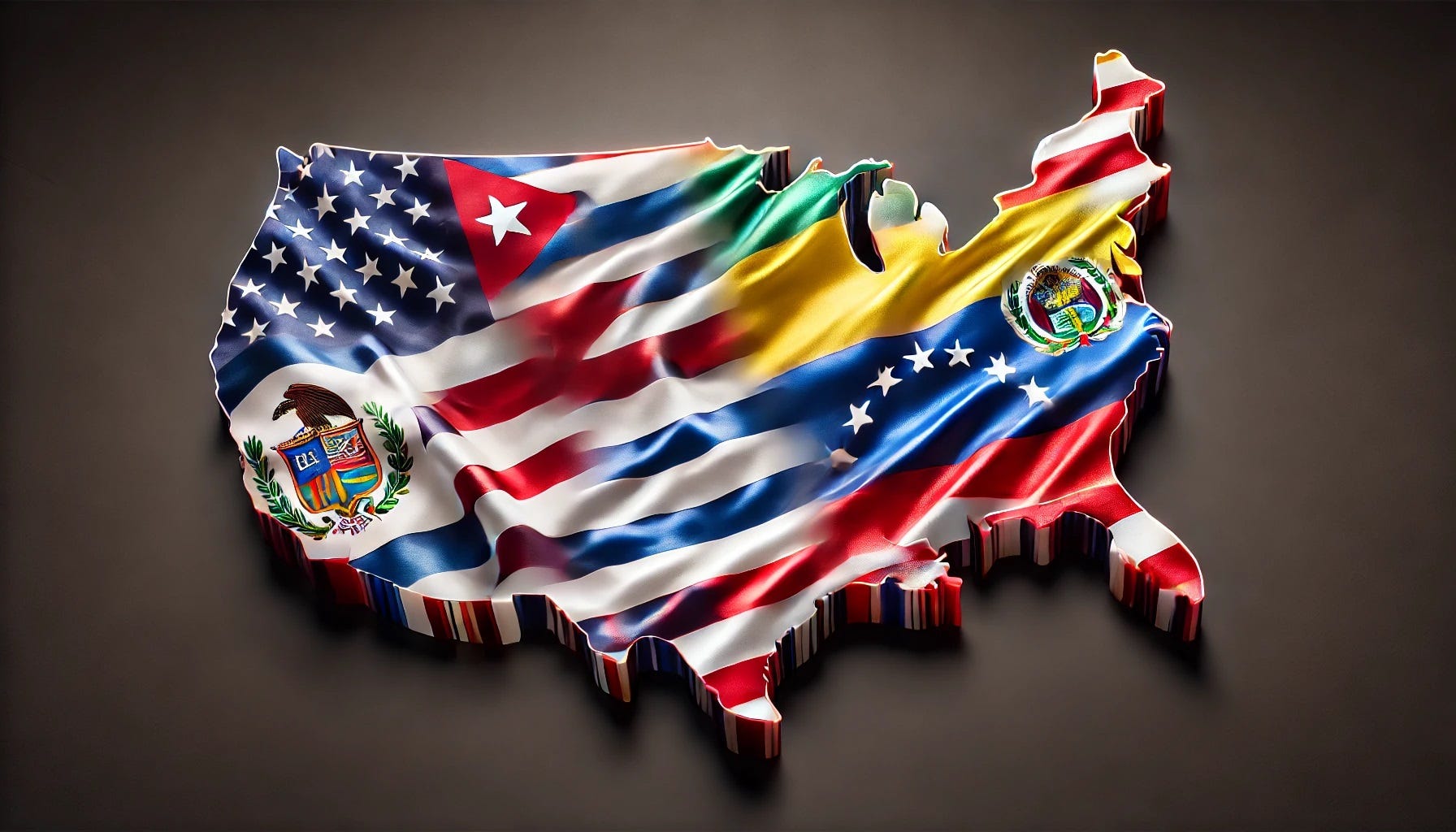|
 |
Getting a Handle on the Hispanic Vote
Hispanic voters are more complicated and diverse than polling results suggest
A potential rightward shift among Hispanic voters is one of the most debated topics among analysts and pundits looking at this year’s election. Some polls say this is real while others say any change from past voting patterns will be minimal or nil.
It’s hard to comprehend why it is so difficult to get a handle on this topic without understanding how vastly diverse the Hispanic community in America is. But once one grasps this, it becomes easier to see why it’s nearly impossible to determine what will happen with any degree of certainty.
Nationality is the first divide one must confront when interpreting polling data. For Hispanics, ancestry can make a difference in how they vote. Those who emigrated from Cuba, for example, have long been the most Republican national subgroup among Latino voters.
The bulk of Hispanic voters, however, have emigrated from Mexico. They did not flee a communist dictatorship, nor are they as educated as the Cuban diaspora. Both factors have disposed them to support Democrats, who typically are the party of choice in the modern era for new immigrants.
The result is that Hispanics from different national backgrounds vote very differently. An October 2020 poll from Spanish-language broadcaster Univision shows that Latinos from Cuba or South America were the likeliest to vote Republican, while those from Puerto Rico were likeliest to vote Democratic. A 2024 survey of Latinos also shows a similar pattern.
Even this, though, is not sufficient to give us a full picture of the Hispanic vote. A recent report shows that different states draw their Mexican immigrants from different regions of Mexico. California, for example, gets a large share of its migrants from the Mexican state of Michoacán, with substantial minorities from the nearby states of Oaxaca and Guerrero. Texas, on the other hand, gets the bulk of its Mexican immigrants from the states of Guanajuato, San Luis Potosi and Tamaulipas.
These states have very different voting patterns within Mexico. Guanajuato, for instance, is almost always the most conservative state in the country, as a legacy of the 1926-29 Cristero War in which faithful Catholics fought a secularizing national government. Guerrero and Oaxaca, on the other hand, are the bastions of the left-populist former President Andrés Manuel López Obrador. It’s perhaps not coincidental, then, that Texas Mexican Americans have long been more open to voting for Republicans than those in California.
Religion is also associated with significant voting disparities. Contrary to popular belief, not all Hispanics are Catholics. A substantial minority have no particular religious belief, while about one in seven are evangelical Protestants. As you might expect, evangelicals are much more Republican than Catholic or nonreligious Hispanics.
Language is also a significant predictor of partisan proclivities. Hispanics who use English all or most of the time are much likelier to vote Republican than those who speak almost entirely in Spanish.
The combination of these differences means it can be very difficult to get a handle on the Hispanic voter. That’s compounded by the fact that their relatively small share of the electorate in almost any state means they are often only a tiny subsample of a poll. The typical national poll surveys between 700 and 1,500 people. Since Hispanics are roughly 11-13% of the likely voter base, a random sample will find no more than 200 Hispanics—and usually much fewer. The recent Marquette Law School national poll, for example, has only 89 Latino respondents, far too few to make any statistically valid inference about how they will vote.
But even larger surveys of only Hispanic voters can find wildly different results. The recent NBC News/Telemundo poll of 1,000 Latino registered voters found Kamala Harris ahead of Donald Trump by only a 54-40% margin. That’s nearly nine points fewer than Joe Biden’s margin in 2020, when data from Catalist showed he carried Latinos 60-37%.
Other polls show much larger margins for Harris. A poll of 1,900 Hispanic voters in the seven battleground states—which excludes more GOP-friendly Florida and Texas—found Harris ahead by 59-37%. That’s not much less than the margins Biden achieved in key states like Nevada and Arizona in 2020.
The result is that it is difficult to say whether Latinos are really more likely to vote significantly more for Trump than they were four years ago. The bulk of polling suggests they are, but any such outcome could be the result of undersampling the pro-Democratic or oversampling the pro-Republican subdemographics of this community.
There will be some clues on Election Night as to what the truth is. Georgia will release its early vote shortly after 7 p.m. Eastern Time, and the results in Whitfield, Echols and Hall Counties—the three with the highest share of Hispanic residents—will be an indication of any discernible shift. Duplin and Sampson Counties in North Carolina, which releases its early vote after 7:30 p.m., will also provide early clues.
Perhaps the most important swing state county to watch for trends is in Arizona. Santa Cruz County is 83% Hispanic and sits on the Mexican border. It moved heavily toward Trump in 2020, as Biden’s margin was 12 points smaller than Hillary Clinton’s four years earlier. It moved farther rightward in 2022’s gubernatorial race, giving Democrat Katie Hobbs a slightly smaller margin than it gave Biden. If the early vote here—released at 10 p.m. Eastern—does not show an even greater shift, we can presume that the red Hispanic wave was just a mirage.
Both campaigns are fighting for every last vote, and Hispanics are one of the key voting blocs they are contesting. Watch this battle in earnest over the next two weeks—and be wary about putting full faith in any particular poll you happen to hear.
You’re currently a free subscriber to Discourse .

